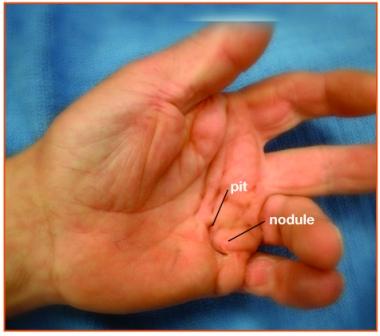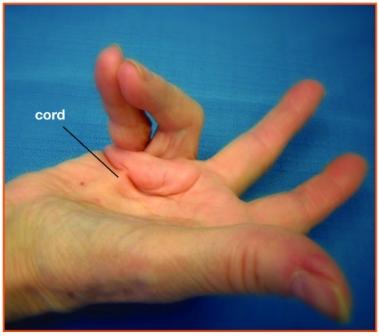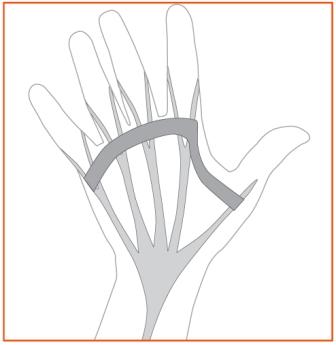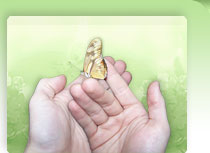
|
|
|
Dupuytren ‘s Disease
What is Dupuytren ‘s disease?
Dupuytren‘s disease is an abnormal thickening of the fascia (the tissue just beneath the skin of the palm). It often starts with firm lumps in the palm. In some patients, firm cords will develop beneath the skin, stretching from the palm into the fingers (see Figure 1). Gradually, these cords may cause the fingers to bend into the palm (see Figure 2). Although the skin may become involved in the process, the deeper structures — such as the tendons — are not directly involved. Occasionally, the disease will cause thickening on top of the finger knuckles (knuckle pads), or nodules or cords within the soles of the feet (plantar fibromatosis).
What causes Dupuytren ‘s disease?
The cause of Dupuytren‘s disease is unknown but may be associated with certain biochemical factors within the involved fascia. The problem is more common in men over age 40 and in people of northern European descent. There is no proven evidence that hand injuries or specific occupational exposures lead to a higher risk of developing Dupuytren‘s disease.
What are the symptoms and signs of Dupuytren ‘s disease?
Symptoms of Dupuytren’s disease usually include a small lump or
series of lumps and pits within the palm. The lumps are generally firm
and adherent to the skin. Gradually a cord may develop, extending from
the palm into one or more fingers, with the ring and little fingers most
commonly affected. These cords may be mistaken for tendons, but they
actually lie between the skin and the tendons. In many cases, both hands
are affected, although the degree of involvement may vary.
The initial nodules may produce discomfort that usually resolves, but
Dupuytren’s disease is not typically painful. The disease may
first be noticed because of difficulty placing the hand flat on an even
surface, such as a tabletop (see Figure 3). As the fingers are drawn
into the palm, one may notice increasing difficulty with activities such
as washing, wearing gloves, shaking hands, and putting hands into
pockets. Progression is unpredictable. Some individuals will have only
small lumps or cords while others will develop severely bent fingers.
More severe disease often occurs with an earlier age of onset.
What are the treatment options for Dupuytren‘s disease?
In some cases, only observation is needed for nodules and cords that
are not contracted. Patients with more advanced contractures may require
surgery in order to improve function.
Various surgical techniques are available in order to correct finger
position. Your treating surgeon will discuss the method most appropriate
for your condition based upon the stage of the disease and the joints
involved (see Figure 4). The goal of surgery is to improve finger
position and thereby hand function. Despite surgery, the disease process
may recur and the fingers may begin to bend into the palm once again.
Before surgery, your treating surgeon will discuss realistic goals and
results.
In some cases, only observation is needed for nodules and cords that
are not contracted. Patients with more advanced contractures may require
surgery in order to improve function.
Various surgical techniques are available in order to correct finger
position. Your treating surgeon will discuss the method most appropriate
for your condition based upon the stage of the disease and the joints
involved (see Figure 4). The goal of surgery is to improve finger
position and thereby hand function. Despite surgery, the disease process
may recur and the fingers may begin to bend into the palm once again.
Before surgery, your treating surgeon will discuss realistic goals and
results.

Figure 1: Dupuytrens disease may present as a small lump, pit, or thickened cord in the palm of the hand

Figure 2: In advanced cases, a cord may extend into the finger and bend it into the palm

Figure 3: Table Top Test

Figure 4: Treatment Diagram
© 2006 American Society for Surgery of the Hand
|
|
|
|

|

Linden Oaks Medical Campus
10 Hagen Drive., Suite 310
Rochester, NY 14625
Ph: 585-922-5840
Rochester General Hospital
Parnell Office Building
1445 Portland Avenue,
Suite G-01
Ph: 585-922-5840
Park Ridge Hospital
1561 Long Pond Road,
Suite 216
Rochester, NY 14626
Ph: 585-368-4879
|
|



